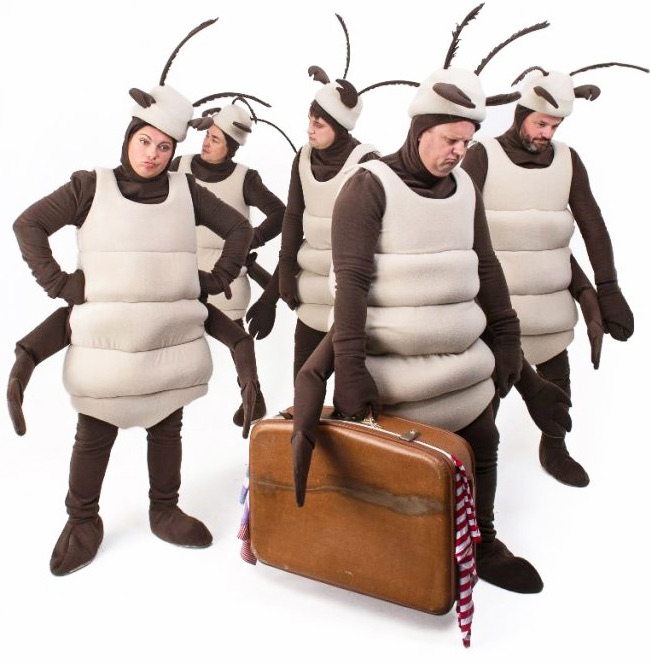
Uninvited bedfellows
Bedbugs are little, wingless nocturnal parasites. They love to feed on the blood of humans. Bedbugs prefer to hide in bedding and on mattresses where they have ready access to their favourite food source.
Bedbugs have highly developed mouthparts that pierce the skin. Their bite is painless, but the bites can become very itchy and swell into reddened weals.
Although bedbugs can harbour diseases in their bodies, transmission to humans is highly unlikely. They are not dangerous unless a person is allergic to them. However, their presence can be distressing, and their bites can be highly irritating.
Bedbugs love humans
Bedbugs feed exclusively on blood. They prefer human blood but will feed on other mammals if necessary. Bedbugs are attracted to body heat and the carbon dioxide in expired air, which is how they usually find their host.
Bedbugs take around five to 10 minutes to feed. The bedbug’s proboscis (feeding organ) swings forward and downward to pierce the victim's skin during feeding. Saliva (containing an anticoagulant) is then injected, which is the cause of an allergic reaction in some people. As the bedbug engorges with blood, its colouring changes from light brown to rust-red.


Common hiding spots for
bedbugs
The living areas favoured by bedbugs include:
• mattresses, particularly along the seams
• bedding such as sheets and blankets
• beneath loosened edges of wallpaper
• between the cracks of wooden floors
• in wall cracks or crevices
• carpet
• furniture, particularly in seams and cracks
Bedbug bites
The bite of a bedbug has certain features, including:
• large weals that reduce to a red mark, then gradually fade over a few days
• itchiness
• reddening of the skin
• localised swelling
• formation of blisters
• slight loss of skin tissue in some cases.
• Treatment for bedbug bites
• Bedbugs are not known to transmit any blood-borne diseases. However, the bites can be itchy and distressing.
Insect bites identification chart



Flea bits are easily identifiable since the fleas tend to bite in the same place several times forming a cluster.
Their bites are small and red, swollen and also extremely itchy.
Flea bites are most common on your ankles and legs.
Bedbug bites typically are small and slightly raised resulting in an itchy bump with a clear centre. They usually bite in a zig-zag pattern.
Bedbug bites will appear in a similar fashion as mosquito bites. The difference is that they’re redder and usually are itchier.
Bedbig bites are often on the upper half of your body, around the face, neck, and arms.
Stings from bees/wasps will cause an immediate sharp or burning pain and swelling.
They will leave a red welt with a small white spot where the stinger broke the skin. There will probably also be some swelling in the area.
In the case of bees, they will leave their stinger behind whereas wasps don’t.



Spider bites are slightly different than insect bites, and should be treated differently.
Look out for one or two small, two-fanged puncture wounds or a bit that turns blue or purple. Less serious spider bites may resemble insect bites.
Typically, a spider bite looks like any other bug bite - a red, inflamed, sometimes itchy or painful bump on your skin and it might even go unnoticed.
Ant bites are caused by their chewing mouthparts. Depending on their size, this be less painful and only leave small marks.
You’ll usually get a red, swollen mark on your skin that may be very itchy.
Some types of ants, like fire ants, are large and venomous, and their bites can cause severe allergic reaction.
You will normally be a victim of ant bite if you have been outside near the ground.
Mosquito bites are a white reddish raised bumps, usually puffy and severely itchy.
Most mosquito bites itch for 3 or 4 days. Any pinkness or redness lasts 3 or 4 days. The swelling can last 7 days.
Bedbugs often hide in luggage, clothing, bedding, and furniture. They are most often found in dwellings with a high rate of occupant turnovers, such as hotels, motels, hostels, shelters, and apartment complexes.
Bedbugs can invade any household, but a high standard of hygiene can discourage bedbugs from spreading widely throughout a home.
How do you know you have Bedbugs?
Being nocturnal, the Asian gecko loves to prey on moths, but being opportunist in its diet, it will dine on any insect that is slow enough to be captured. They tend to pounce rather than chase it’s prey. This is why you will see most of the geckos and their droppings near lights.
The first indication of a bedbug infestation may be the presence of bites on family members. A thorough inspection of your premises, especially the usual hiding spots, may also reveal:
the bedbugs themselves – however, due to their size, they are often hard to see
small bloodstains from crushed bugs on sheets or mattresses
rusty or dark spots of bug excrement on mattresses, bedding, or surfaces
an offensive, sweet, musty odour when infestations are severe.
Bedbug bites
The bite of a bedbug has certain features, including:
large weals that reduce to a red mark, then gradually fade over a few days
itchiness
reddening of the skin
localised swelling
formation of blisters
slight loss of skin tissue in some cases.
Treatment for bedbug bites
Bedbugs are not known to transmit any blood-borne diseases. However, the bites can be itchy and distressing
How to treat a Bedbug bite:
Resist the urge to scratch.
Use calamine lotion or anaesthetic creams to treat the itching.
Wash the bites with antiseptic soap to reduce the risk of infection
Apply an icepack frequently to help relieve swelling.
Take pain-relieving medication if symptoms are severe.
See your doctor if the bite develops an infection.
How to treat bedbugs yourself:
Wash bedding and clothes in hot water for 30 minutes. Then put them in a dryer on the highest heat setting for 30 minutes.
Hot-water extract (Steam clean) the affected mattresses, couches, and other places where bedbugs hide.
Or, vacuum mattresses, seal them in dark plastic and leave them outside in the hot sun for as long as possible.
Use No-gaps all any cracks where bedbugs can harbour.
Declutter your home and reduce harbouring areas.
Vacuum seal clothes, items and linen that can't be cleaned.
Spray common hiding spots with a surface pesticide registered to control bedbugs. Follow the label directions carefully. Do not treat clothes, bedding and pillow with pesticides.
How Conquer Termites can help:
Our technicians are trained to determine the extent and areas of the infestation. They will apply safely and appropriately registered pesticide to eradicate the bedbugs.
Good hygiene practices, such as frequent house cleaning, should help to prevent any further infestations. However, vacuuming should be avoided immediately after treatment to ensure the residual pesticide is not removed.
Repeat visits may be necessary to ensure all bedbugs have been eradicated eventually. This is due to residual eggs or castings that might still be present due to the various stages of their lifecycle.





